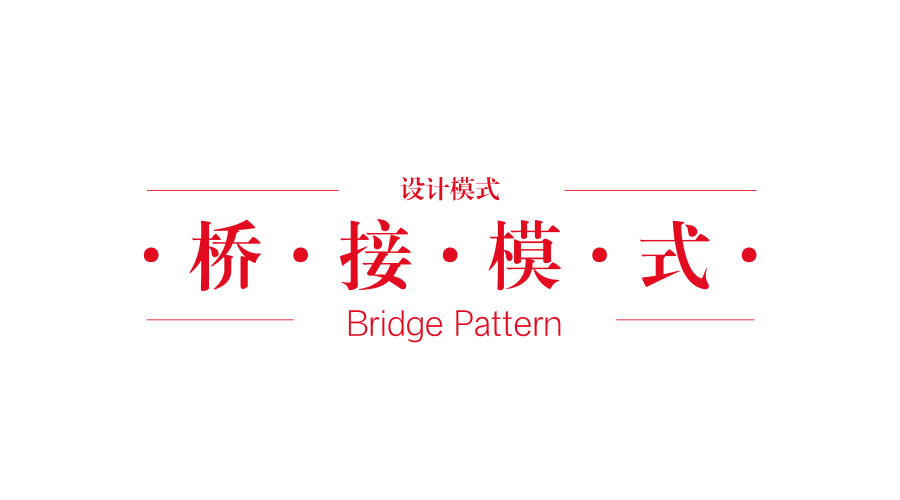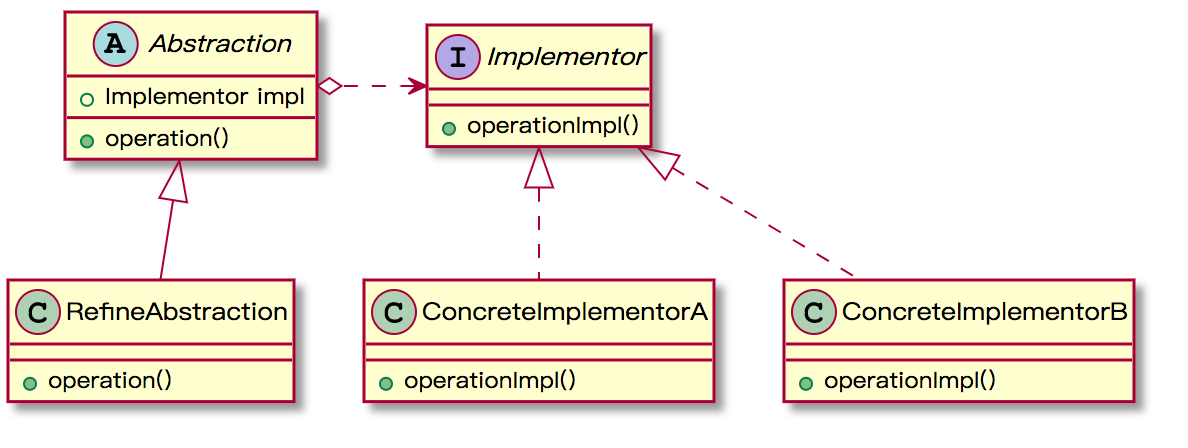
桥接模式是种很实用的结构型设计模式,又称为柄体模式或接口模式,该模式可以将两个维度的变化分离开,让系统更符合“单一职责原则”,与多层继承方案不同,它将两个独立变化的维度设计为两个独立的继承等级结构,并在抽象层建立抽象关联,该关联关系类似一条连接两个独立继承结构的桥,故而叫桥接模式

- Abstraction(抽象类):一般是抽象类,其中定义一个 Implementor 类型的对象,它与 Implementor 之间具有关联关系。该类可以包含抽象业务方法,也可以包含具体业务方法
- RefineAbstraction(扩展抽象类):一般是具体类而不是抽象类,实现 Abstraction 中的抽象方法
- Implementor(实现类接口):该接口一般情况仅提供基本操作,Abstraction 中做更多更复杂的操作,Implementor 接口对这些基本操作进行声明,具体实现交给子类,通过关联关系,Abstraction 不仅拥有自己的方法,还可以调用 Implementor 中的方法,使用关联关系代替继承关系
- ConcreteImplementor(具体实现类):代替父类对象,提供给抽象类做具体的业务
举一个衣服店的例子,店里现在只剩下两种衣服,黄色 XXL 号和红色 M 号的,衣服这个对象具有至少两个维度的变化,一个是衣服尺码,一个是衣服颜色,现在来看用桥接模式实现衣服对象的代码示例:
Implementor 类:
1 | public interface Color { |
ConcreteImplementor 类:
1 | public class Yellow implements Color { |
Abstraction 类:
1 | public abstract class Clothes { |
RefineAbstraction 类:
1 | public class XXLClothes extends Clothes { |
Client 类:
1 | Yellow yellow = new Yellow(); |
现在需要增加几种衣服的类型,就会很快捷方便,也遵守“开闭原则”比如增加一个粉色 L 号衣服对象,首先增加一个 RefineAbstraction 类:
1 | public class LClothes extends Clothes { |
再添加一个 ConcreteImplementor 类:
1 | public class Pink implements Color { |
Client 类:
1 | Yellow Pink = new Pink(); |
桥接模式中体现了很多面向对象设计原则的思想:
- 单一职责原则:一个类负责一项职责
- 开闭原则:开放扩展,关闭修改
- 里氏替换:子类能完全替代父类
- 依赖倒置:不依赖细节,依赖抽象
桥接模式的好处有很多,但是对使用者有一定的经验要求,需要正确识别独立变化的两个维度,以及一开始就要对抽象层进行设计
评论